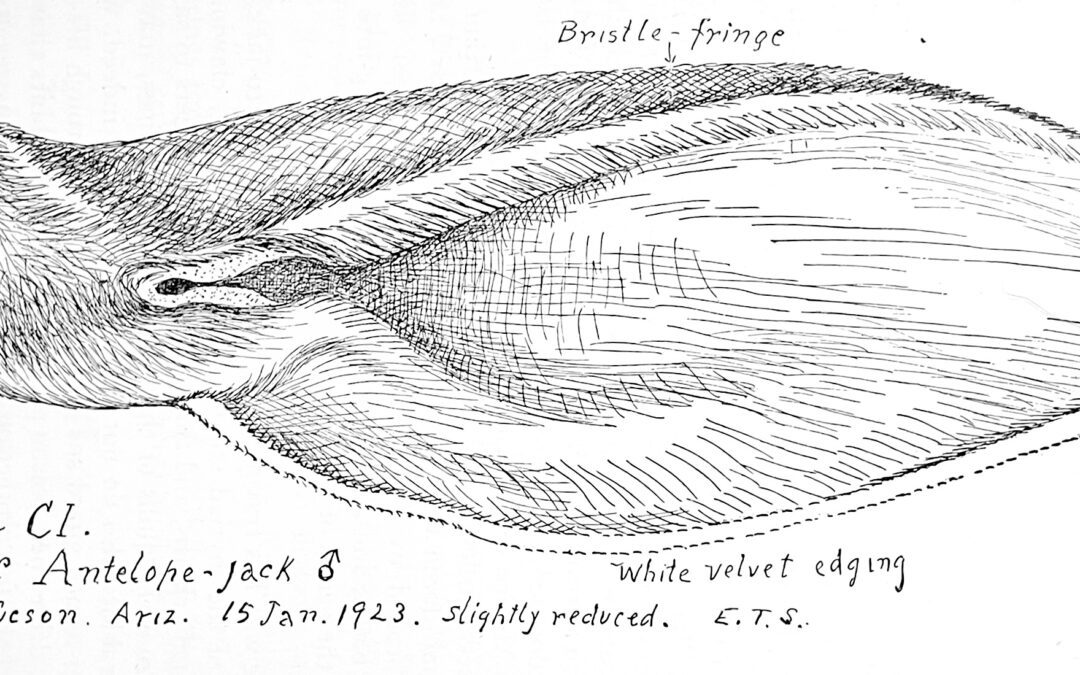Ear of Antelope Jack by Ernest Thompson Seton
This is one in an ongoing series of nature essays from Lives of Game Animals (1925-1928) by Ernest Thompson Seton. In this case, the tragedy of the highway. This species—Lupus alleni—lives in Mexico and southern Arizona. The most common member of this group in New Mexico is Lepus californicus, the Black-Tailed Jack. Less frequent, but known from Taos County, New Mexico, is the White-Tailed Jack, Lepus townsendii. Sadly, none of them have evolved to avoid night time traffic.
When Our Ways Met/Vol IV pg. 778
“On that memorable day, we saw about forty Jacks in the hour and a half that passed before sunset, glorious behind the purple peaks of Arizona, gave place to dusk. Under the ragged, angular mesquite, the first one was descried, as we have seen. He rose, and for a moment stood, a statue of blazing white with red-hot ears up-cocked. Crack! and the vast, up-pent energy of his sinewy limbs was lashing in the death convulse.
One cannot but feel guilty as the struggle slowly ends. The bright golden-brown eyes still shine and seem to look. But his high-strung life is ended, the beautiful Burro-jack is a corpse. Yes, I can salve my conscience by saying that I will save his skin and skull for the museum; but that wonderful body will be thrown away. Here, indeed, are 1,000 cardinal facts bound up and offered in that snowy skin. But – thanks to my ignorance – I salvage only 2, and throw away the 998. May I be forgiven, and wiser man come by before it is too late.”

